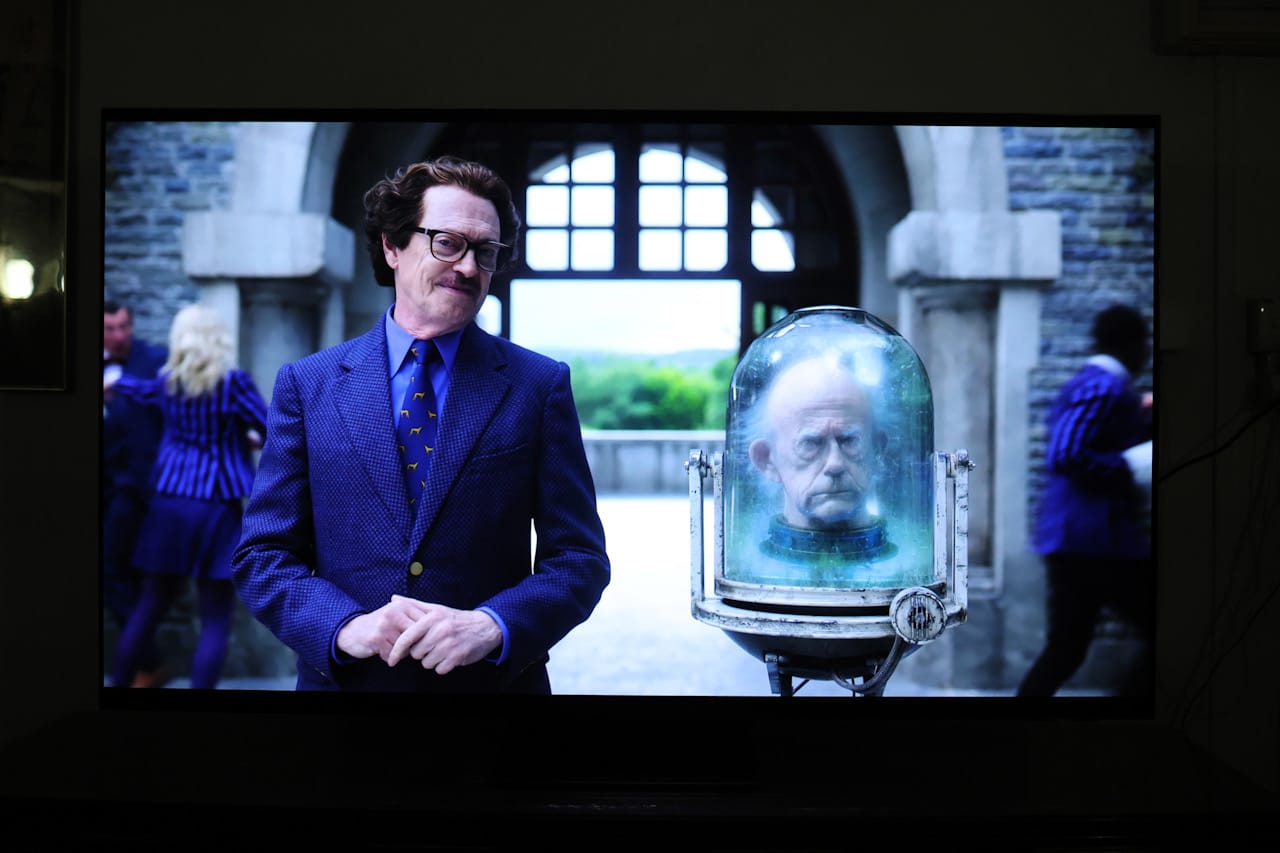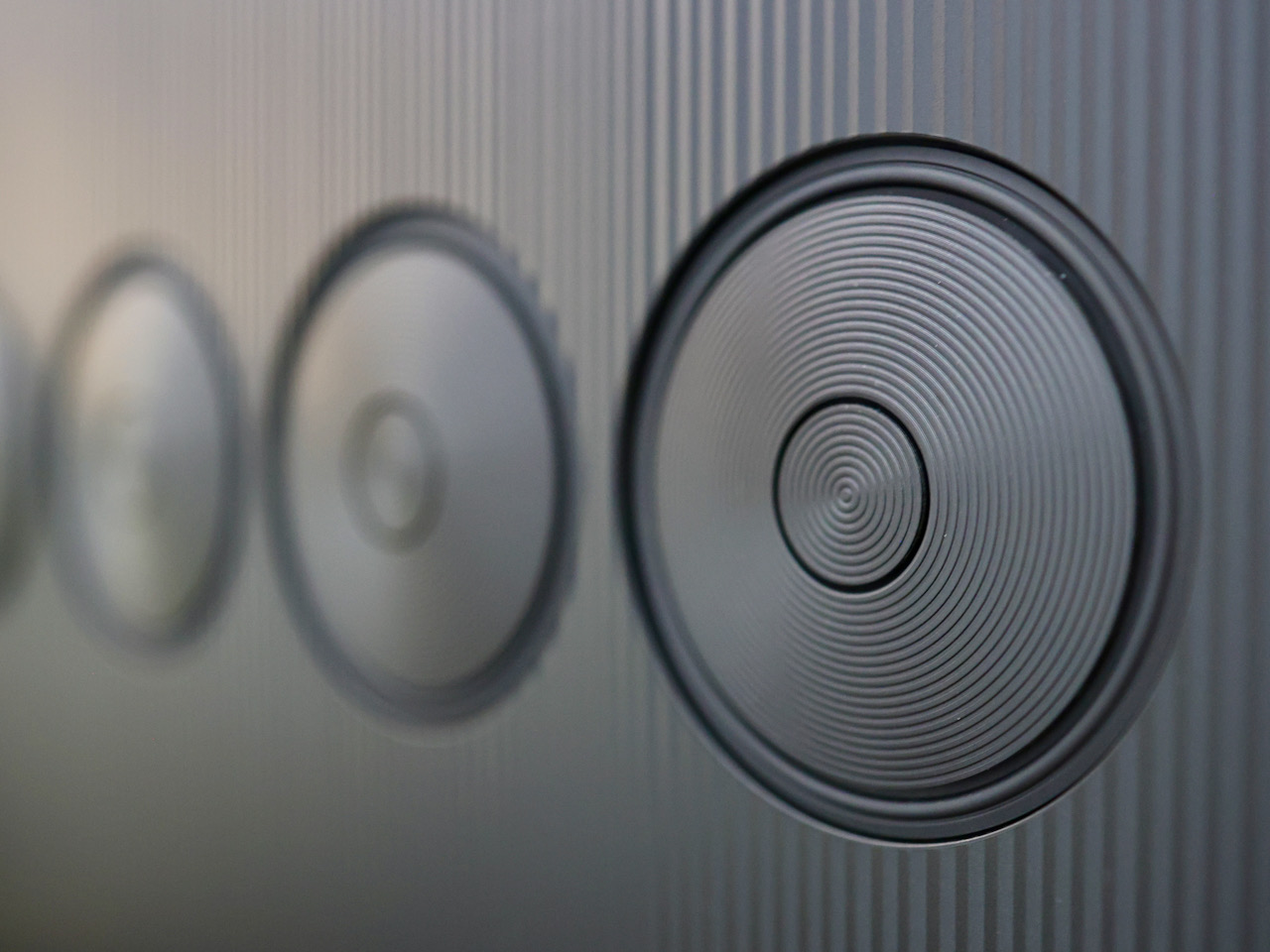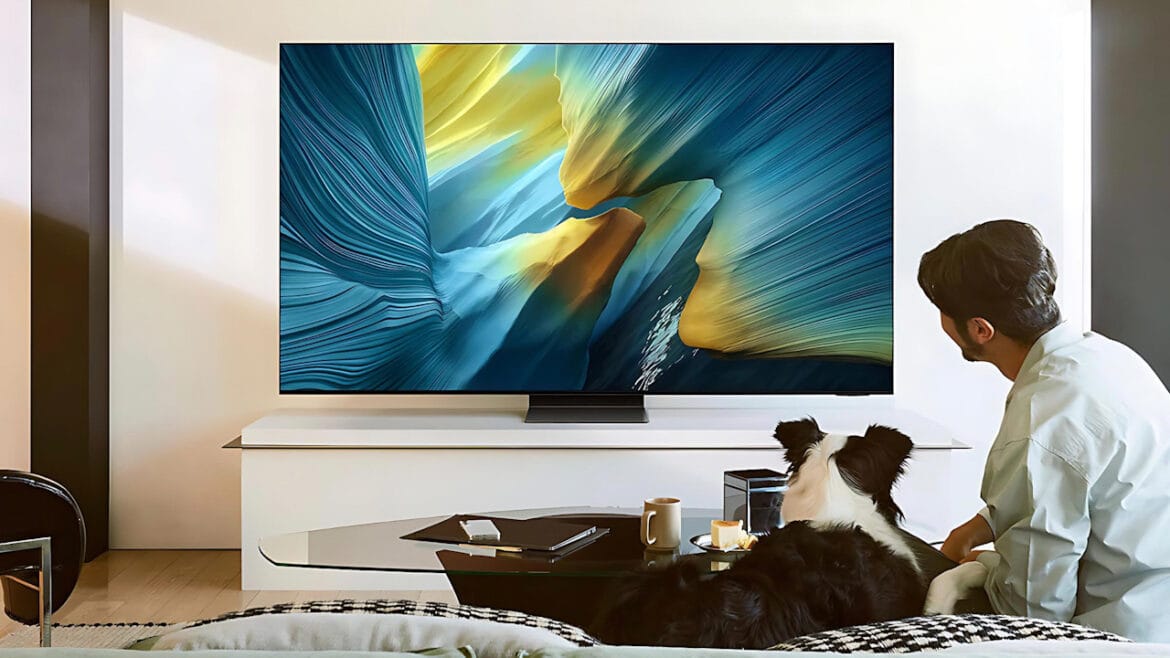Samsung’s 65-inch S95F OLED has a simple proposition: it simply works. This nifty OLED TV is designed with a ‘buy-and-forget’ mantra; it’s not coming out of the blocks trying to outdo Sony in the cinematic stakes, and nor is it trying to set new benchmarks as a reference-class professional panel.
It’s setting out to do the most practical thing — to be the ‘everyday’ OLED TV that doesn’t need coddling.
Let’s start with the S95F’s Glare-Free OLED panel, arguably the most visible improvement for most viewers. The matte-finish design diffuses reflections, solving the biggest problem with daytime viewing: glare. The trade-off is that in broad daylight, blacks may appear marginally lighter and colours lose a hint of that glassy depth, but it’s a marginal trade-off I’d gladly make if it meant I didn’t have to rearrange my living room to accommodate. Dim the lights, though, and you get the full abilities of OLED again. (Why are you watching TV in the day, though? Don’t you have work to do?)
Samsung hasn’t published any official brightness numbers, but this panel has no trouble delivering punchy highlights that remind me of TVs in the 2,000-nit range. Overall, the luminance looks comfortably high for daytime viewing. And while the Automatic Brightness Limiter pulls back in large, bright scenes (e.g., a white ski slope or a sun-blasted pitch), it’s typically not noticeable most of the time.
Picture quality, warts and all
Colour-wise, the S95F OLED is vibrant regardless of the brightness levels, and in Filmmaker Mode, skin tones look lifelike. Samsung still favours a more vibrant look, but it’s flattering and is far from the old oversaturated showroom clichés.
That said, the S95F’s processing is quite aggressive by default. While the NQ4 AI Gen3 processor cleanly handles 1080p upscaling just fine, lower-definition or heavily compressed streams and clips (720p/1080p), such as football highlights, draw attention to the limitations — edges feel over-etched and faces gain a slight ‘processed’ look. Sadly, we’re not in that era where we’ve solved this yet; not even with AI. If you’re ‘hypersensitive’ to oversharpening or the signature artefacts, you’ll likely turn off the enhancements, like I did.
If Pokemon-collecting all the visual standards is crucial, then I have bad news for you — LG and Sony are more likely to scratch your itch, as the absence of Dolby Vision remains another Samsung quirk. But unless you’re a cinephile, the difference is honestly minimal on this panel since it supports HDR10 and HDR10+.
While Dolby Vision’s tone-mapping can save less capable TVs from clipped highlights or lost shadows, the S95F performs well enough that HDR10+ looks just as convincing. At this point, Dolby Vision’s extra finesse is purely academic; only hardcore cinephiles will find a reason to moan.
At this point I’m also contractually obliged to remind you that OLED’s instant pixel response — meaning all OLED TVs face this issue — makes high-frame-rate content look liquid-smooth but also makes the classic 24-frame stutter more obvious. #itsafeaturenotabug
On the whole, the S95F nails what matters most for everyday casual use: it just looks right without needing a degree in calibration.
Your TV now pays attention
 Vision AI uses a small sensor array to read the room — light, motion, and presence — enabling the TV to trigger actions. Again, it’s evolutionary rather than revolutionary, but it allows some nifty features. Case in point: AI Energy Mode dims or switches off the panel when you leave, and switches it back on when you walk past, which can be handy for dedicated TV rooms.
Vision AI uses a small sensor array to read the room — light, motion, and presence — enabling the TV to trigger actions. Again, it’s evolutionary rather than revolutionary, but it allows some nifty features. Case in point: AI Energy Mode dims or switches off the panel when you leave, and switches it back on when you walk past, which can be handy for dedicated TV rooms.
Having this sensor also makes it possible to fine-tune screen brightness and colour temperature to match the ambient light — it’s not always obvious, but arguably the viewing experience is more consistent throughout the day.
The benefits are more apparent when paired with SmartThings, as you can use it essentially as a motion detector to trigger home routines. Walk into the room and the TV can wake up, trigger a preset scene, or display your dashboard; leave, and it powers down or tells your connected lights to do the same. Motion detection works for the most part, so long as you plan for the trigger to be in front of the TV — but do note that bright, glaring light also makes it hard to detect motion.
Vision AI is perhaps the best Jordan Schlansky-ish metaphor this year’s upgrades — when it works perfectly, you have no idea that it has been pulling the strings in the background.
Now with ‘good to have’ AI
The 2025 Tizen interface feels snappier and more coherent than before, but then again, you’d expect that from a flagship TV with a new, NQ4 AI Gen 3 processor. And like all things today, this TV wears its AI badge conspicuously front and centre.
Features like Live Translate, which require the broadcast source to have closed captions or transcriptions (i.e., it actually translates from text rather than directly from audio), fall into the useful-but-limited category. AI Picture Pro generally delivers decent results with tone-mapping and upscaling. However, I have to caveat that with the usual disclaimer that less-than-ideal source material can wind up with a slightly over-processed look. Auto Game Mode mostly works out of the box without configuration, leaving you primarily with just the choice of HDR tone-mapping.
Other features like Click to Search, Pet and Family Care, and Generative Wallpapers work as advertised, but lean more toward ‘good to have’ than essential.
What Samsung gets right is ecosystem integration: the SmartThings app turns your phone into a remote with swipe controls and quick settings. Tap View mirroring is seamless, while Multi View supports side-by-side viewing of phone and TV content. Galaxy Watch owners can also pause or play with a wrist flick. None of these features will change your life, but they’re all impressively integrated; more purposeful than token.
Near-zero lag and full-fat gaming features
 For gamers, the S95F is about as close to plug-and-play perfection as you’ll find. All four HDMI ports are full-bandwidth HDMI 2.1, supporting 4K up to 144Hz (165Hz on PC), plus VRR, G-Sync/FreeSync Premium Pro and ALLM. Input lag is barely noticeable.
For gamers, the S95F is about as close to plug-and-play perfection as you’ll find. All four HDMI ports are full-bandwidth HDMI 2.1, supporting 4K up to 144Hz (165Hz on PC), plus VRR, G-Sync/FreeSync Premium Pro and ALLM. Input lag is barely noticeable.
When it comes to HDR in Game Mode, it’s still a game (hur hur) of trade-offs (but you know that already). Standard mode gives you the brightest highlights, but it may push the colours a little more. Original mode gives you better accuracy at slightly lower peaks. But either way, HDR games look spectacular — punchy yet detailed, with none of the clipping older OLEDs might have suffered.
And if you want to use this with a PC, note that the QD-OLED sub-pixel layout can cause minor text fringing at very close distances.
Design and sound
 The new TV sports an Infinity One Design that is impossibly slim — barely a centimetre thick — with bezels so narrow the image feels like it’s floating despite its 65-inch panel. All cables run through the detachable One Connect Box, leaving a single ‘umbilical cord’ to the panel. It’s minimalist and smartly executed, and is perfect for wall-mount setups.
The new TV sports an Infinity One Design that is impossibly slim — barely a centimetre thick — with bezels so narrow the image feels like it’s floating despite its 65-inch panel. All cables run through the detachable One Connect Box, leaving a single ‘umbilical cord’ to the panel. It’s minimalist and smartly executed, and is perfect for wall-mount setups.
Audio is serviceable; the built-in 70W 4.2.2 speaker system delivers clear dialogue and a hint of spaciousness through Samsung’s Object Tracking Sound+, but as with most TV speakers, the low end is shallow and distortion creeps in when you push the volume. Pairing it with a Q-Series soundbar unlocks Q-Symphony, which merges the TV’s speakers with the bar’s channels for a fuller, more coherent soundstage — but we did not test out this feature.
The everyman’s premium OLED TV
The S95F is not going to steal headlines because none of its features are flashy — and it’s actually all the better for it. It’s bright enough for our sunny days, bold enough for cinema, fast enough for competitive gaming, and smart enough to integrate with your daily routine. Its flaws are relatively minor: no Dolby Vision, slightly heavy-handed sharpening and AI image processing. But if you want a TV that simply looks right in almost every situation, this is the one.
- Samsung S95F OLED - 7.5/107.5/10
Samsung S95F OLED
Bright enough for sunlit rooms, sharp enough for gamers, and smart enough for daily routines — the Samsung S95F isn’t chasing cinematic purity or spec-sheet supremacy, and that’s why it works. Over-eager AI processing and the lack of Dolby Vision might irk purists, but for everyone else, this OLED checks all the boxes. It’s the kind of TV you set up once and forget about, because it simply looks right.
